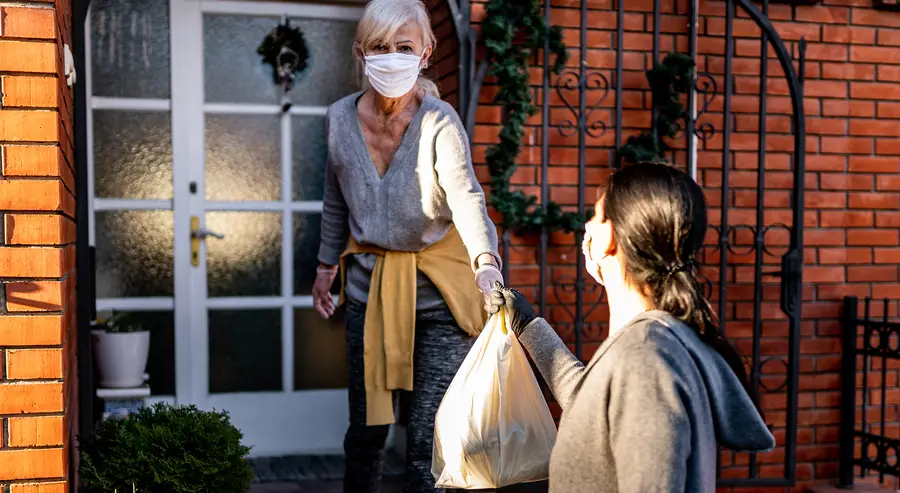Insights
COVID-19 Model Updates

As the world continues to grapple with COVID-19, a disease caused by a novel coronavirus, modeling has been noted as a key resource to predict the scale and possible impact. We recently spoke to Dr. Sarah Rhea, RTI Research Epidemiologist and Dr. Pia MacDonald, RTI Senior Epidemiologist, about their epidemiology and modeling work.
Tell us more about your work estimating the need for hospital beds in North Carolina and how this compares to other modeling efforts.
Sarah Rhea: As part of our response to COVID-19 in North Carolina, RTI has joined an informal collaborative of independent North Carolina epidemiologists and data scientists applying epidemiologic and modeling techniques to help inform near-term policy decisions in North Carolina in the weeks and month ahead. With this collaborative, we have developed a simple “weather forecasting” modeling approach that relies on the best-available information from three independent research models.
Our approach is to draw preliminary insights from independent models and established modeling teams to estimate the likelihood that North Carolina hospital bed shortages might occur under different planning scenarios. We then combine results from each independent model to yield composite results.
Among our most recent findings are that maintaining social distancing (also sometimes referred to as physical distancing) policies, such as those in place now in our state, will give us the best chance of ensuring our health care system has sufficient capacity to manage the growing number of COVID-19 infections.
What role has social distancing played in this? What other factors could be contributing?
Pia MacDonald: Social distancing is critical because it is an evidence-based strategy to slow transmission of the virus within communities. Slowing transmission of the virus though our communities is imperative to ensure that our limited health care resources such as staff and hospital beds will meet demand.
Social distancing policies mean little without individuals and communities adopting the practices in their daily lives.
Not all people may have the same ability to socially distance themselves from others. Some are considered essential staff in their workplaces, others work at jobs where there is no option to work from home, while others still have to do hourly work outside the home to survive.
The current strategy of having infected people self-isolate in their homes does not work for everyone. Self-isolation specifically means that an infected person has their own room to stay in and a connected bathroom that only they use. For those living with families or in groups or in small spaces, self-isolation can be very challenging. Shared bedrooms, bathrooms and eating spaces means more exposure to surfaces and places that can be contaminated with virus.
There is an urgent need to plan to support communities and people who are not in situations to be able to socially distance themselves or to self-isolate if they are infected. We need to do this immediately, and the solutions will vary by communities. This has to happen right away and will be critical as we move forward with the COVID-19 pandemic public health response.
How drastically and frequently are epidemiological models being updated?
Sarah Rhea: It really depends on the model, as to how frequently it is updated and how it is updated. As epidemiologists, we are continually evaluating what new information about the pathogen can be incorporated into the models.
The precision of our models improves with more and better data. The models that our North Carolina-based team are working on are currently being manually updated as their structure continues to be built out and refined. We are working to bring more automation in at least one of the models to facilitate timely updates.
How do current models compare to those made for other disease outbreaks such as Ebola, Zika, MERS and SARS? Can you shed light on whether a similar trend was occurring during those epidemics?
Sarah Rhea: We are not starting from scratch in our ability to forecast the impacts of infectious diseases. Researchers and epidemiologists use various techniques, including modeling, for understanding disease transmission and projecting the impact of diseases—including those caused by viruses like Ebola, Zika, MERS-CoV and SARS-CoV—on a range of outcomes. These diseases differ in their epidemiology, but we can learn from other outbreaks to help inform our actions for the COVID-19 pandemic.
Also, modeling results can be used to help inform public health response and preparedness in situations like the current COVID-19 pandemic. It’s important to understand that these models all have their own assumptions, and no model is perfect. Over time, modeling results will change and get more precise with new information.
How should Americans interpret these models and apply them to their daily life?
Sarah Rhea: Modeling results can be used to help inform public health response and preparedness and policy decisions in situations like the current COVID-19 pandemic. In addition to information regarding social distancing, we can learn when and where more resources such as hospital beds and ventilators might most likely be needed.
What role will warmer weather or herd immunity play in the future?
Pia MacDonald: Having an effective vaccine is the surest way to halt transmission of this novel virus in the United States and elsewhere. Without a vaccine, herd immunity can slow down transmission within our communities. Since this is believed to be an entirely novel virus to infect humans, we are still in the very earliest stage of developing herd immunity. We are a long way off of developing enough herd immunity to slow the spread of the novel virus communities, more broadly.
There is no evidence, as far as I’ve seen, that indicates that the spread of this novel virus will change with warmer weather. Human behavior may change with warmer weather and that may alter the spread in our communities, but the impact of this could be negligible.
Disclaimer: This piece was written by Sarah Rhea (Research Epidemiologist) and Pia MacDonald (Senior Director, Applied Public Health Research) to share perspectives on a topic of interest. Expression of opinions within are those of the author or authors.


